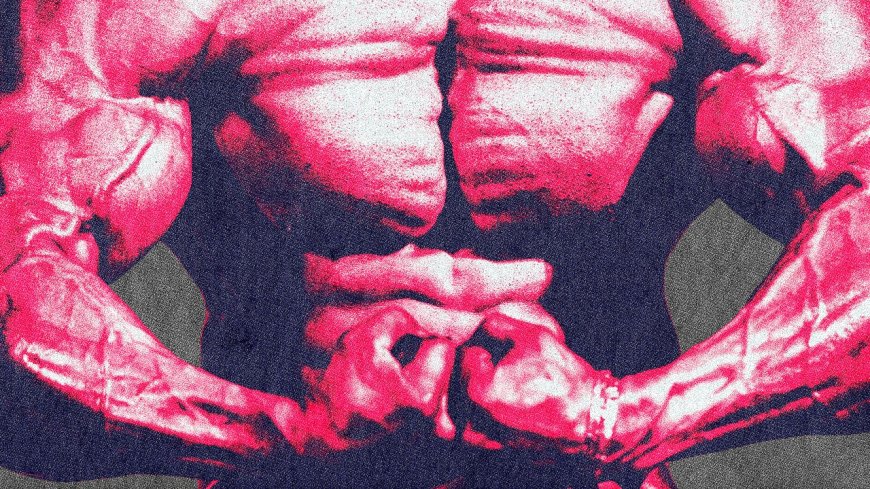How to Actually Build Muscle When You Work Out
WellnessA simple guide to max out your gains and fill out your shirtsleeves.By Dean StattmannNovember 13, 2024Photograph: Getty Images; Collage: Gabe ConteSave this storySaveSave this storySaveWhether you’ve been lifting for years or you’re just getting started, if your goal is to build muscle, you need to first understand that gaining size and gaining strength are two distinctly different things. Yes, lifting for muscle growth—or hypertrophy, to use the scientific term—will yield some strength gains along the way, and vice-versa, but the way you work out will primarily move you closer toward one goal or the other.So, what is the best workout routine for gaining muscle? Contrary to the well-calloused bro science of yore, it’s got nothing to do with four sets of 10, tempo reps, or even specific exercises. In fact, gaining muscle is not so much about what you do, but rather how you do it. Put another way, the same exercise could be used to either pack on muscle or increase strength, depending on your approach.Consider the difference between bodybuilders and powerlifters—two groups that rely heavily on the bench press in their training. “A powerlifter is trying to lift as much weight as possible, whereas bodybuilders are trying to increase the size of their muscles.” says Mathew Welch, MS, CSCS, ATC, USAW-1, an exercise physiologist at HSS. “Don't get me wrong, the bodybuilders are going to get strong, but they're not necessarily going to have the same strength as a powerlifter, and that’s because the qualities that they're training are very different.”“The big take-home message here is that there's no magical exercise for hypertrophy,” says Luke Carlson, founder and CEO of Discover Strength. Instead, what we do have is a handful of research-backed principles that you can use to optimize your existing workout for muscle growth.Hard reps equal hard muscle“The biggest scientific discovery in strength training of the last 15 years is that we sure don't need very much of it if you want to add muscle,” says Carlson. “But we’ve got to do it harder than we ever thought.”Research shows us that muscle growth is driven by mechanical tension. Unlike time under tension—the amount of time a muscle spends under load, which actually does nothing for hypertrophy—mechanical tension kicks in the moment your reps begin to naturally slow down as you approach muscle failure. Trainers call these “effective reps.”“Effective reps are defined as the last five or so repetitions in a set that brings the muscle to failure, and these reps are believed to provide the most stimulus for hypertrophy due to the mechanical tension being experienced by the active fibers,” says Welch.“The closer you get to failure, the more motor units and muscle fibers you recruit, and the greater chance you have to increase the size of your muscle,” says Carlson. “The most important element is whether you’re getting close to muscle failure—more important than how many sets you do or how many days a week you work out.”This means that the weight you lift is essentially irrelevant, as long as you push yourself towards muscle failure—useful knowledge for the next time you find yourself at a hotel gym with nothing more than a pair of 20-pound dumbbells. (However, as we’ll explain below, high-rep sets with lighter weights may not be the most efficient way to pack on size.)Critically, mechanical tension cannot be hacked by simply slowing down your reps. “That's actually not really going to be doing a whole lot for you,” says Welch. “The key thing is that the velocity is slow, but it's not voluntarily slow.”Leave one or two reps in the tank“Effective reps are the ones that truly lead to muscle growth,” says Stan Kravchenko, celebrity trainer and founder of OneFit. That means there’s really no reason to slog through lengthy sets to make your muscles grow. “People aren’t really talking about this,” he says. “It’s a new approach. If you would have asked me 10 years ago, I would have told you to do a lot of volume, like 15 reps.”“If you're doing 10 reps, the first four or five reps are not contributing to muscle hypertrophy; they're essentially a warm-up for what's coming later in the set,” says Carlson. In fact, high rep schemes ultimately just create more fatigue, extending the time your body needs to recover between workouts—hence why we wouldn’t recommend relying on those lighter weights too often.The problem is that hitting muscle failure can be just as taxing on your system as unnecessarily long sets, potentially limiting how soon you’re able to get back in the gym, says Welch. “When you're training to failure, that is going to produce the most amount of hypertrophy, regardless of the exercise. The issue that you run into is that training to failure produces a lot of fatigue in the days following. So it should be used sparingly.”Most PopularSales (Style)Banana Republic's Latest Sale Is Comfort Food for Your ClosetBy Reed NelsonGQ RecommendsThe Best Jewelry Under $150

Whether you’ve been lifting for years or you’re just getting started, if your goal is to build muscle, you need to first understand that gaining size and gaining strength are two distinctly different things. Yes, lifting for muscle growth—or hypertrophy, to use the scientific term—will yield some strength gains along the way, and vice-versa, but the way you work out will primarily move you closer toward one goal or the other.
So, what is the best workout routine for gaining muscle? Contrary to the well-calloused bro science of yore, it’s got nothing to do with four sets of 10, tempo reps, or even specific exercises. In fact, gaining muscle is not so much about what you do, but rather how you do it. Put another way, the same exercise could be used to either pack on muscle or increase strength, depending on your approach.
Consider the difference between bodybuilders and powerlifters—two groups that rely heavily on the bench press in their training. “A powerlifter is trying to lift as much weight as possible, whereas bodybuilders are trying to increase the size of their muscles.” says Mathew Welch, MS, CSCS, ATC, USAW-1, an exercise physiologist at HSS. “Don't get me wrong, the bodybuilders are going to get strong, but they're not necessarily going to have the same strength as a powerlifter, and that’s because the qualities that they're training are very different.”
“The big take-home message here is that there's no magical exercise for hypertrophy,” says Luke Carlson, founder and CEO of Discover Strength. Instead, what we do have is a handful of research-backed principles that you can use to optimize your existing workout for muscle growth.
Hard reps equal hard muscle
“The biggest scientific discovery in strength training of the last 15 years is that we sure don't need very much of it if you want to add muscle,” says Carlson. “But we’ve got to do it harder than we ever thought.”
Research shows us that muscle growth is driven by mechanical tension. Unlike time under tension—the amount of time a muscle spends under load, which actually does nothing for hypertrophy—mechanical tension kicks in the moment your reps begin to naturally slow down as you approach muscle failure. Trainers call these “effective reps.”
“Effective reps are defined as the last five or so repetitions in a set that brings the muscle to failure, and these reps are believed to provide the most stimulus for hypertrophy due to the mechanical tension being experienced by the active fibers,” says Welch.
“The closer you get to failure, the more motor units and muscle fibers you recruit, and the greater chance you have to increase the size of your muscle,” says Carlson. “The most important element is whether you’re getting close to muscle failure—more important than how many sets you do or how many days a week you work out.”
This means that the weight you lift is essentially irrelevant, as long as you push yourself towards muscle failure—useful knowledge for the next time you find yourself at a hotel gym with nothing more than a pair of 20-pound dumbbells. (However, as we’ll explain below, high-rep sets with lighter weights may not be the most efficient way to pack on size.)
Critically, mechanical tension cannot be hacked by simply slowing down your reps. “That's actually not really going to be doing a whole lot for you,” says Welch. “The key thing is that the velocity is slow, but it's not voluntarily slow.”
Leave one or two reps in the tank
“Effective reps are the ones that truly lead to muscle growth,” says Stan Kravchenko, celebrity trainer and founder of OneFit. That means there’s really no reason to slog through lengthy sets to make your muscles grow. “People aren’t really talking about this,” he says. “It’s a new approach. If you would have asked me 10 years ago, I would have told you to do a lot of volume, like 15 reps.”
“If you're doing 10 reps, the first four or five reps are not contributing to muscle hypertrophy; they're essentially a warm-up for what's coming later in the set,” says Carlson. In fact, high rep schemes ultimately just create more fatigue, extending the time your body needs to recover between workouts—hence why we wouldn’t recommend relying on those lighter weights too often.
The problem is that hitting muscle failure can be just as taxing on your system as unnecessarily long sets, potentially limiting how soon you’re able to get back in the gym, says Welch. “When you're training to failure, that is going to produce the most amount of hypertrophy, regardless of the exercise. The issue that you run into is that training to failure produces a lot of fatigue in the days following. So it should be used sparingly.”
This is why researchers recommend ending each set one or two reps before failure. “This gives you the ability to both stimulate the muscle and train the muscle more frequently, so it’s like the best of both worlds,” says Welch, who generally recommends hitting each muscle group with at least three sets of 4–8 reps, with three minutes of rest between sets. Ultimately, the effective reps you’ll rack up from being able to train more frequently will outweigh the ones you’ll sacrifice from not taking every set to complete failure.
As for how you organize your workouts, according to Welch, it doesn’t really matter as long as the muscles you’re focusing on are getting enough attention each week. “Organizing your workouts into body part splits is a great way to target the muscles you are trying to grow, while managing fatigue and recovery. Full-body workouts, however, can be just as effective for hypertrophy,” he says. “Which routine is best? This depends on personal preference.”
Pursue progression—but don’t obsess over it
One of the longstanding muscle-building principles that still holds true today is progressive overload—the idea that to keep building muscle you need to consistently be increasing either the number of reps or the weight you’re lifting. “It gives us feedback that our training is working and the desired adaptations are taking place,” says Welch.
However, what we know now, thanks to the research on mechanical tension, is that those numbers don’t necessarily need to go up every workout in order for you to continue building muscle. “You just have to have the intent for them to go up,” says Carlson. “Let’s say you got 11 reps last time, so you were going for 12 today. If you fail at 11, that's fine. As long as you tried to get 12.”
In terms of how often you need to be hitting the gym to maximize hypertrophy, experts recommend giving a muscle at least three days to recover after each workout. “Generally, training a muscle 1–2 times per week is recommended—assuming you are using progressive overload and getting enough stimulating reps to the target muscle,” says Welch.
Just remember that progressive overload is specifically about increasing either reps or weight—while keeping all other variables, like rest times and range of motion, constant. “Adding extra sets, doing intensity techniques, or trying new exercises doesn't count as progressive overload,” says Kravchenko. “All that does is add more volume and more strain on your body to then recover from.”
According to Welch, beginners and intermediate lifters should aim to see progression every one to three workouts, while experienced lifters can expect this to happen every three to five workouts.
“Once you start to plateau or become uninterested, it may be time to change the exercise,” he says. “Over the long term, if you're able to train close to failure and progressively overload, you're going to be in a really good place and you're definitely going to see the gains that you're looking for.”






























































